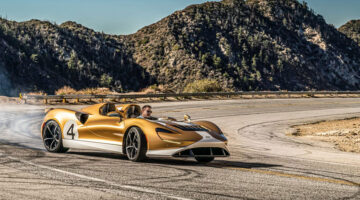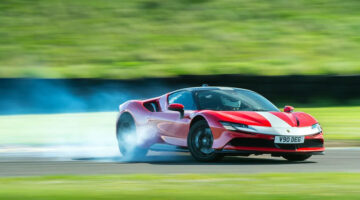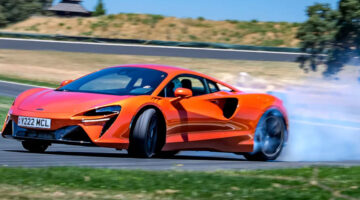A high point in the current McLaren range – purposeful, but also beautifully sculpted
no images were found
| Excellent ride and handling, brutal performance | |
| Minor cabin irritations, gruff engine note, depreciation |
Just over a decade ago McLaren launched the MP4-12C. Technically impressive and very, very quick, the one thing it couldn’t quite do was warm the soul.
But such was McLaren’s progress, it’s first ground-up replacement in 2017 represented a huge leap for the brand, because the 720S couldn’t be more different. There will be a few who’ll always take the theatre and passion of the Italian supercar brands over the more effiicent Ron Dennis-style of doing things, but spend any time with a 720S.
With striking and original styling giving it a presence like few other supercars, an astonishingly potent drivetrain and one of the best chassis of any production car, the 720S isn’t just a performance benchmark like its 650S and 12C predecessors, but one of the most engaging and complete supercars on sale.
It’s not a car without faults – McLaren’s V8 has rarely been the most melodic of partners, the infotainment system is a nuisance to operate and good lord do these things shed value, but the 720S remains one of our favourite cars.
Prices, specs and rivals
Use cosmic levels of restraint to avoid specifying any options and a basic 720S comes in at $258,000, with the 720S Spider at $293,000. Luxury and Performance trim levels add to this tally, while a huge range of colours, trim options and other toys will lift each figure towards the $370k mark.
Luxury specification brings with it dark palladium-coloured exterior trim, silver window surrounds, ambient lighting for the engine bay and cabin, liberal use of leather trim, and heated and memory-adjustable sports seats. Performance swaps the palladium exterior trim for carbonfibre, the silver window surrounds for graphite, and spreads a mixture of leather, Alcantara and carbon throughout the interior – along with, once again, ambient lighting.
The sector in which the 720S competes is hotly contested but also varied. Most recently at evo, we selected the Ferrari 488 Pista, Lamborghini Aventador SVJ and Porsche 991 GT3 RS for direct comparison with a 720S Track Pack (mainly a roll bar, buckets and enough carbon to shed 24kg), a test in which the McLaren held its head high.
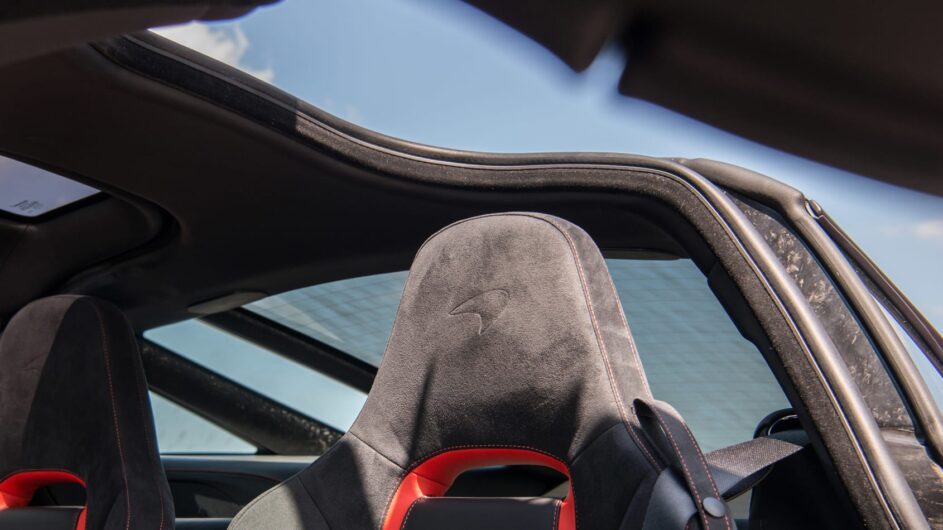
The regular car comfortably stands comparison with the less focused of each of these, not least the Ferrari F8 Tributo, probably its closest rival conceptually, while the market for open-topped cars at this level to rival the Spider is hardly small either. Whatever you choose to consider a rival though, the 720S is right up there.
It’s worth mentioning though that McLaren depreciation can be as fierce as the car’s performance. Early examples have already dropped as low as $173,000 – a fall of $86k from the basic, non-optioned figure they were worth originally. Modern supercars can be hit and miss with residual values, but the best 720S right now could well be a used one with a healthy extended warranty
Engine, gearbox and technical specs
It’s fair to say that with a mid-mounted 4-litre twin-turbocharged V8 the 720S’s beating heart isn’t a huge mechanical departure from other McLarens, but it’s nothing if not startlingly powerful. McLaren quotes a peak power output of 710bhp at 7500rpm from the dry-sumped M840T unit, together with 568lb ft of torque at 5500rpm.
It’s attached to a seven-speed dual-clutch transmission, and as is customary with McLarens, an open rear differential, albeit one equipped with McLaren’s ‘Brake Steer’ system which replicates the limited-slip effect to a degree. Suspension is by double wishbones at both ends, with adaptive dampers and Proactive Chassis Control II – hydraulic cross-linking of the damping designed to balance the occasionally conflicting requirements of ride quality and body control. Unlike many competitors, McLaren still uses hydraulic assistance for its steering – and, not without coincidence, the 720S has fantastic steering, as we’ll discover later.
All these components are attached, via subframes, to the second generation of McLaren’s carbon Super Series structure, dubbed Monocage II. The structure itself contributes only 102kg of the 1283kg dry weight (1419kg at the kerb) and forms both the basis of the chassis, and acts as the passenger safety cell – as well as something from which to hinge McLaren’s customary butterfly doors.
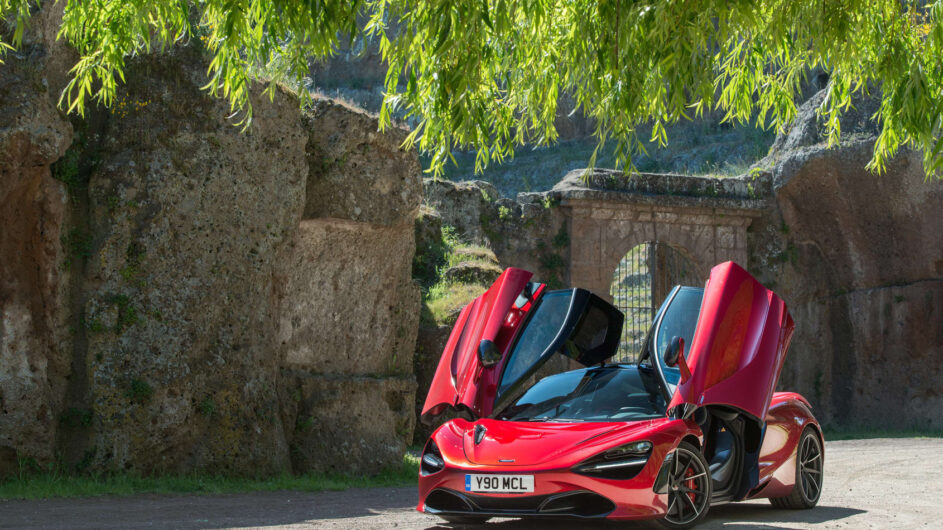
Performance and 0-100 time
The road test figures for McLaren’s legendary F1 have been seared into every petrolhead’s brain for the last few decades, but in recent years we’ve seen its remarkable acceleration numbers fall to dozens of new models – even if precious few have ever beaten its top speed.
Predictably, the 720S is one of several cars that will get from a standstill to 100kph in less time, somehow finding enough traction off the line for a 2.8sec run. Zero to 100kph takes another tenth, with 200kph done in 7.8sec, and the quarter-mile would please Dominic Toretto, over in just 10.3sec. Top speed is 342kph.
We can provide a few more figures, having independently tested the 720S to 96kph in 2.9sec, and clocked 0-160kph in 5.6sec. We’ve also run the 720S at Anglesey’s coastal circuit, which provides a great basis for comparison with other supercars. At 1:11.5, it’s actually 1.1sec quicker than the P1 hypercar on its standard road rubber and only three-tenths off a P1 on sticky Trofeo R tyres. Only more track-focused cars such as the 911 GT2 RS and 488 Pista have gone quicker in this class.
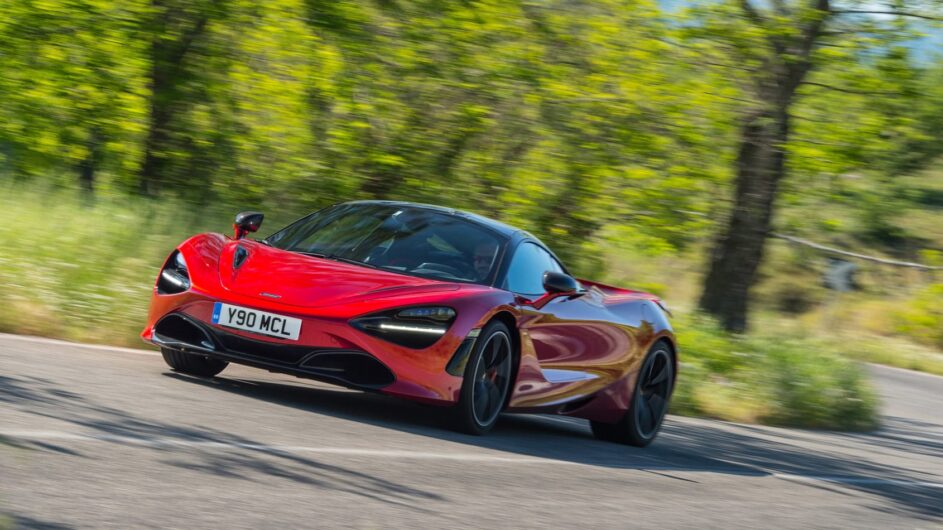
The 720S is very much one of those cars that feels good for its numbers, too. In fact, you’d swear it was making more than its 710-horse output, given the way it’ll get from one measure to another on an autobahn or circuit.
You’d not know it at idle, when the engine sounds harsh and faintly gravely. Get up to speed though and it feels faintly unhinged, particularly on dry roads where it’s easier to find traction. The rush is accentuated by a real build-up of boost through the mid-range and you feel like Slim Pickens hanging on at the top end. While McLaren’s yet to build a V8 that has true aural appeal, the angry blare as the revs rise and rushing whoosh of the turbochargers is fully appropriate for the way the 720S absolutely lunges up each straight.
Despite the huge potential, though, the engine also has a milder, useable side, quiet and smooth at lower speeds, and the dual-clutch ’box is as happy to trundle around as it is swapping cogs at the red line. The build-up in power delivery does give the V8 some character too – adding an element of excitement to every journey knowing huge potency is just a throttle-squeeze away.
Ride and handling
A wise person once said ‘what is good for ride is good for handling’, and it’s a saying McLaren has taken to heart, the 720S dealing with iffy surfaces better than some hot hatchbacks. The result isn’t just a car that’s surprisingly comfortable, but also one that makes light work of roads that would feel a lot busier, and require a lot more driver input, in some of its rivals.
It’s a factor of that hydraulically interlinked suspension set-up, which takes the place of conventional mechanical anti-roll bars. While anti-roll bars do what they say on the tin, controlling roll around a car’s axis, linking each side of the car can be detrimental to ride comfort, with bumps at one wheel having an effect at the other. Like an old Citroën – albeit a lot more sophisticated and controlled by some mind-bending algorithms – McLaren’s set-up allows for both compliancy and control.
It has limits, even given the stiff carbon structure – it’s not immune from potholes, and really sudden intrusions can still thump through the chassis. But for the most part, the 720S rides with an impressive fluency.
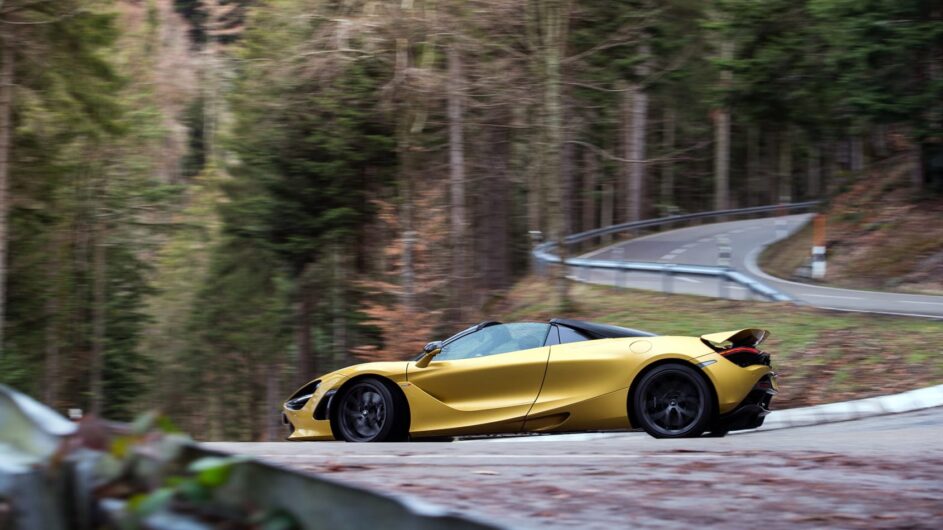
As you’d expect, it’s also a capable handler. Key to its appeal is the steering, which is about as good as it gets short of McLaren’s own hardcore, slack-free ‘Longtail’ models. The wheel feels quite light at first, but perhaps a better way of putting this is that it isn’t artificially heavy – there’s simply not much weight sitting over the front axle, and on the move there’s a constant stream of feedback tugging lightly through the rack. Precision and response are both perfectly judged too.
Few supercars inspire so much confidence over the first few kilometres, at least in the chassis department – with the full performance of that engine never far away, you’ll tread more carefully on the right-hand pedal than you’ll lean on the front end.
The 720S will carry huge speed along a road, and feels spectacular when you’re in the groove. It’s also got a more intimidating side though, harder to read when the chassis starts moving around – something you’re admittedly more likely to discover on a track than on the road.
L/100km and running costs
It’s probably fair to say that fuel consumption isn’t a major factor in the purchase of many McLarens, but for those who wish to know, McLaren quotes a combined WLTP figure of 12.2L/100km, with a low of 23.4L/100km and a high of a remarkable 9.2L/100km – not bad at all from a 322kph-plus supercar.
As is increasingly the case from the more accurate WLTP figures, those numbers do look similar to figures we’ve seen driving the 720S out in the real world. On a motorway run it really will approach 9.4L/100km, and on track it’ll definitely knock on the door of single figures.
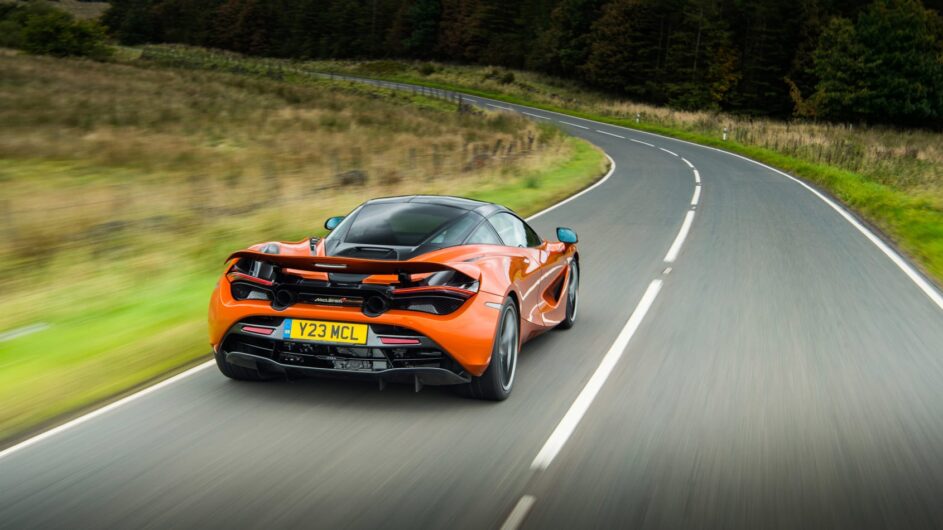
McLaren’s combined CO2 figure of 276g/km is a little less rosy. The first-year VED payment of $2690 is small beans compared to the list price, as is the $575 bill for the following five years.
You’ll get a three-year unlimited mileage warranty on a 720S, but it’s well worth plumping for the extended 12-year warranty if you’re intending to keep the car for longer, covering the majority of mechanical and electrical components, with a few exceptions. It’s also available on used cars, which will be good news to anyone eyeing up early cars dipping down to the $185,000 mark..
Interior and tech
It’s a tale of two parts inside the 720S. On the one hand, this is a clean, modern and comfortable cabin with some fabulous details and a view of the road almost unsurpassed among supercars. On the other, McLaren’s vision of in-car entertainment still lags sorely behind that of rivals.
Good stuff first. Enter through the dramatic butterfly doors (you’ll find the microswitch behind the upper edge of the sinuous air intake) and you’re presented first with a reasonably chunky carbon sill to step over, and then an artfully designed and well-trimmed cabin. With a huge range of personalisation available there’s little point in commenting on individual material or colour choices, suffice to say the cars we’ve driven so far have all felt absolutely appropriate for the class.
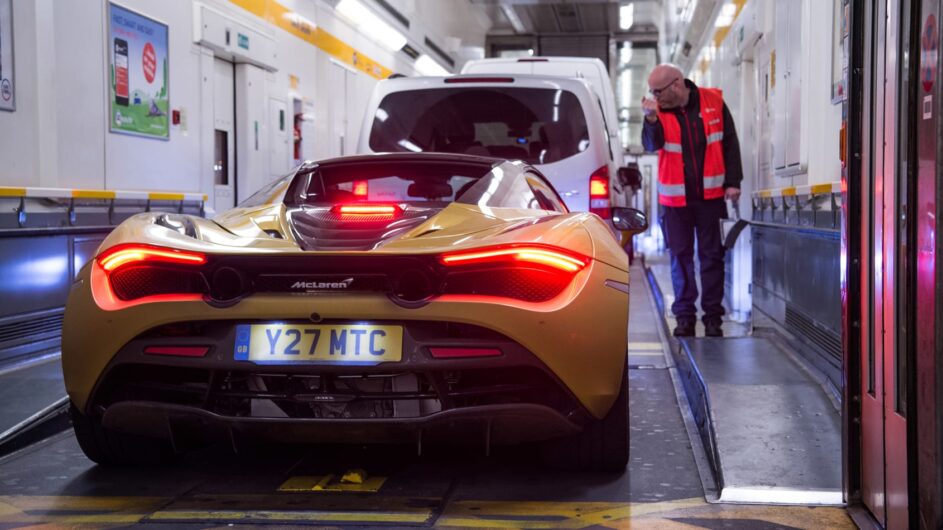
Several elements are as close to perfect as you’re likely to find. The driving position is generally excellent, with a slim-rimmed wheel ahead of you, shapely seats, and a panoramic view thanks to the glassy cockpit. The view forward isn’t unlike that of a Lotus (or an old Honda NSX), with a low scuttle and, thanks to the stiff carbon structure, fairly slim forward pillars.
The two pedals are arranged in such a way that left-foot braking is encouraged, which may take a little getting used to for some drivers, though right-foot braking certainly isn’t out of the question even if there’s been some compromise made on the brake’s location. The two seats are positioned either side of a fairly slim centre tunnel, but it’s not so tight you’ll rub shoulders with your passenger – and the vertically stacked controls on the narrow centre console look neat.
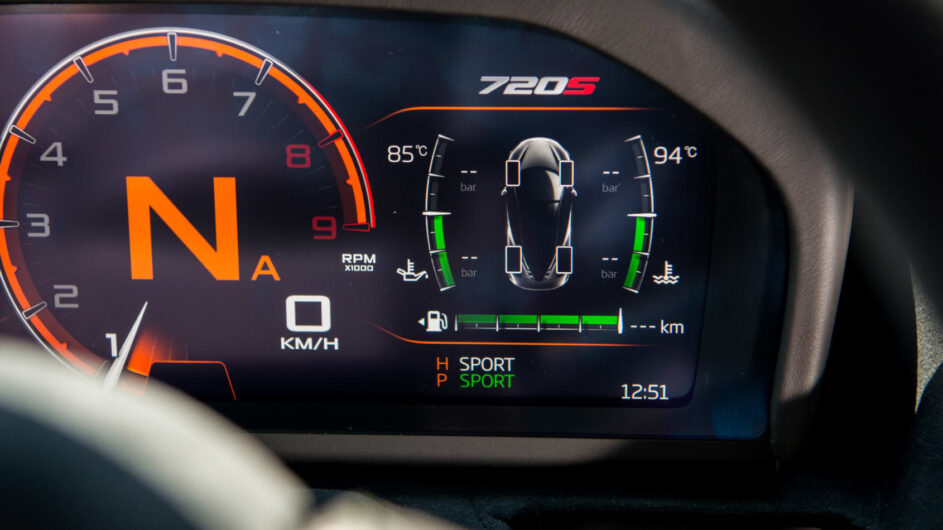
Directly in front is a digital screen for all the vital functions, while Track mode rotates this unit to a slim bar-graph with only the essentials. There’s another screen though on the dashboard, and it’s this that may cause some issues. There’s little wrong with it aesthetically, but McLaren’s ‘Iris’ infotainment set-up is just a little tricky to navigate, slow to respond and occasionally unreliable, and while you do get physical hot keys to swap menus, it’s still a nuisance controlling minor functions through the screen.
There are a few other ergonomic issues too. The spoon-like controls behind the wheel for functions such as cruise control and the car’s nose lift never seem to operate the same way twice, while McLaren’s driving mode arrangements – two, four-position rotary dials, which operate differently depending on whether the Active button between them is pressed – are borderline unfathomable.
Design
Time has lessened the shock value of the 720S, and what remains is, to our eyes at least, one of the best-looking supercars on the roads. Distinctive, original and perfectly proportioned, it serves perfectly as both a unique design in its own right, and a centrepoint for the McLaren range as a whole, with varying degrees of extremity either side of it.
Like all current McLarens, the 720S has a slightly cab-forward stance, with the cabin tapering in both height and width towards the rear of the car. This glassy teardrop gives the cabin a uniquely airy feel, but also lends the car its distinctive proportions, while the car’s sculpted flanks give the appearance of a perfect union between form and function.
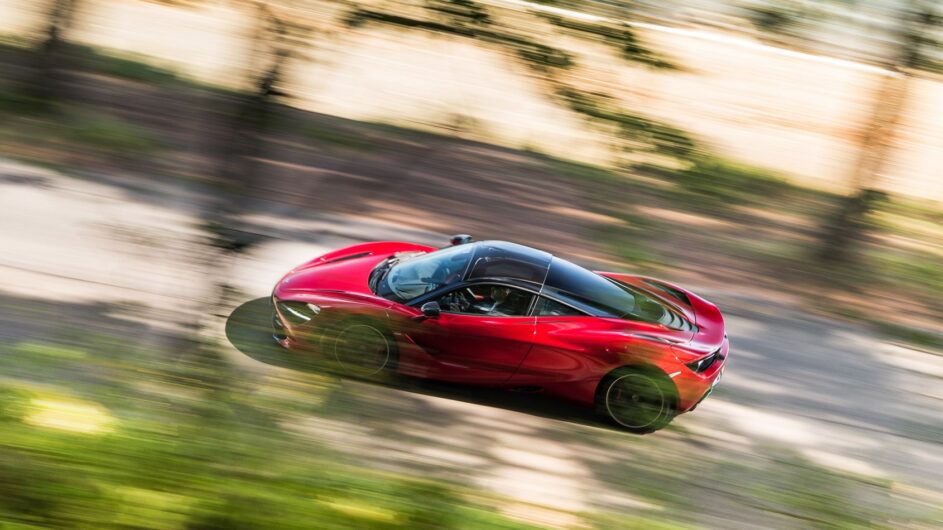
There are some details that remain a little difficult to get used to three years down the line from launch. The headlamps are recessed in a way that resembles eye sockets, an effect that works better in some colours than others (though it has to be said, the power and light pattern of the lamps themselves is fantastic).
The rear too can look a little busy, improved if the spoiler is down, though the best angle is probably in profile – it’s a car with all the style and character that the original MP4-12C arguably lacked. It’s only marginally diminished in Spider form too, whose side profile remains similar thanks to the buttressed roof arrangement.
This article originally appeared at evo.co.uk
Copyright © evo UK, Dennis Publishing

